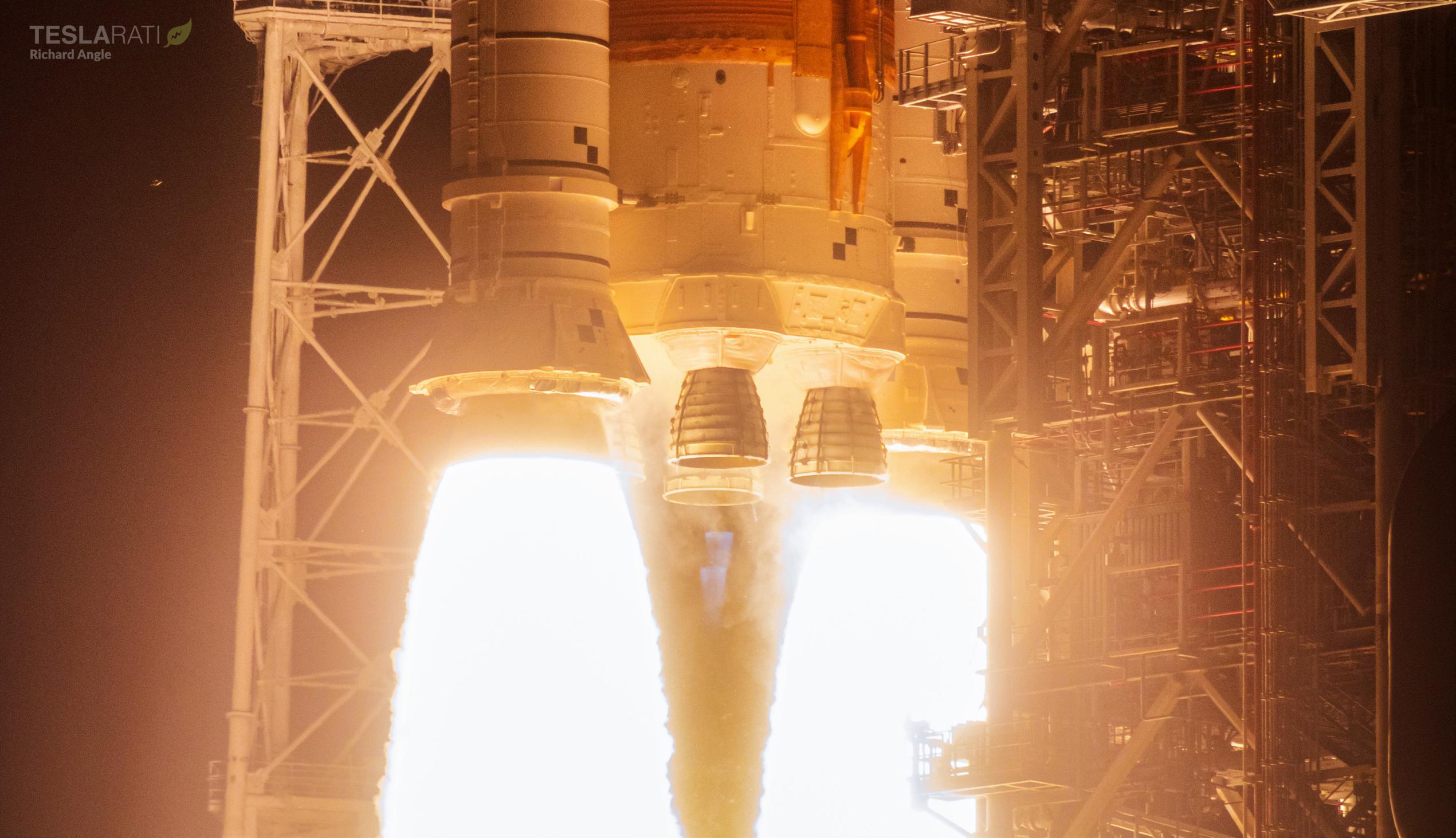
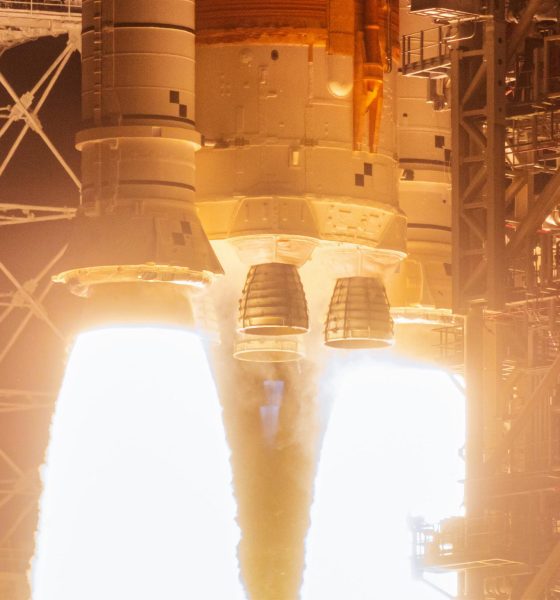
News
NASA SLS rocket launches Orion spacecraft to the Moon
After years, months, days, hours, and minutes of waiting, NASA’s first Space Launch System (SLS) rocket has successfully lifted off from Kennedy Space Center and sent an Orion spacecraft on its way to the Moon.
Originally projected to launch by late 2016, SLS lifted off for the first time at 1:48 am EST (06:48 UTC) on November 16th, 2022. Once known as Exploration Mission 1 (EM-1), NASA’s SLS debut was renamed “Artemis I” when the Trump administration created the Artemis Program in 2017. By most measures a semi-modernized Apollo Program without a geopolitical race against the Soviet Union, the Artemis Program survived the election of a new president in 2020, and the SLS rocket’s debut has officially become the program’s first major mission to get off the ground.
That SLS rocket has had a very long journey to its first successful launch. Supplied by United Launch Alliance (ULA), the rocket’s small Interim Cryogenic Propulsion Stage (ICPS) – the stage responsible for orbital burns – was delivered to the Kennedy Space Center in November 2017. Boeing shipped the first Core Stage – SLS’ central liquid rocket booster – to Mississippi for proof testing in January 2020, and CS-1 completed that testing in March 2021 and was delivered to Florida by April 2021.

After almost 12 months of painstaking assembly, the first fully-assembled SLS rocket rolled out to Kennedy Space Center Launch Complex 39B (Pad 39B) and attempted its first on-pad wet dress rehearsal (WDR) test. Seven months, three partially-completed WDRs, and two aborted launch attempts later, everything finally came together on November 16th, 2022.
By all appearances, the first SLS launch went perfectly. Shortly before liftoff, SLS ignited four former Space Shuttle Main Engines, making sure they were performing as expected. Seconds later, the launch computer fully committed and ignited both of SLS’ Shuttle-derived solid rocket boosters (SRBs) – motors than cannot be shut down after they’re lit. Much like the Shuttle did, SLS leapt off the pad after SRB ignition.
Combined, NASA says its RS-25 liquid engines and SRBs produced up to 4000 tons (8.8M lbf/39,200 kN) of thrust at liftoff, making SLS the second most powerful rocket to ever leave the launch pad. Only the Soviet Union’s N1 rocket, which produced up to 4500 tons (9.9M lbf/44,100 kN) of thrust at liftoff, was more powerful. But unlike N1, which failed four times over four launch attempts, the first SLS rocket reached orbit as planned, making it the most powerful rocket ever successfully launched.
About two minutes after liftoff, both SRBs successfully separated from the Core Stage. Eight and a half minutes after liftoff, the Core Stage shut down its four RS-25 engines and deployed the ICPS and Orion spacecraft just below the height of a stable orbit. 51 minutes after liftoff, ICPS ignited its lone RL-10 engine for 22 seconds to insert itself and Orion into a stable Earth orbit. Finally, about an hour and forty minutes after liftoff, ICPS ignited for a lengthy 18-minute trans-lunar injection (TLI) burn, sending Orion on a trajectory that will intercept the Moon on November 21st.
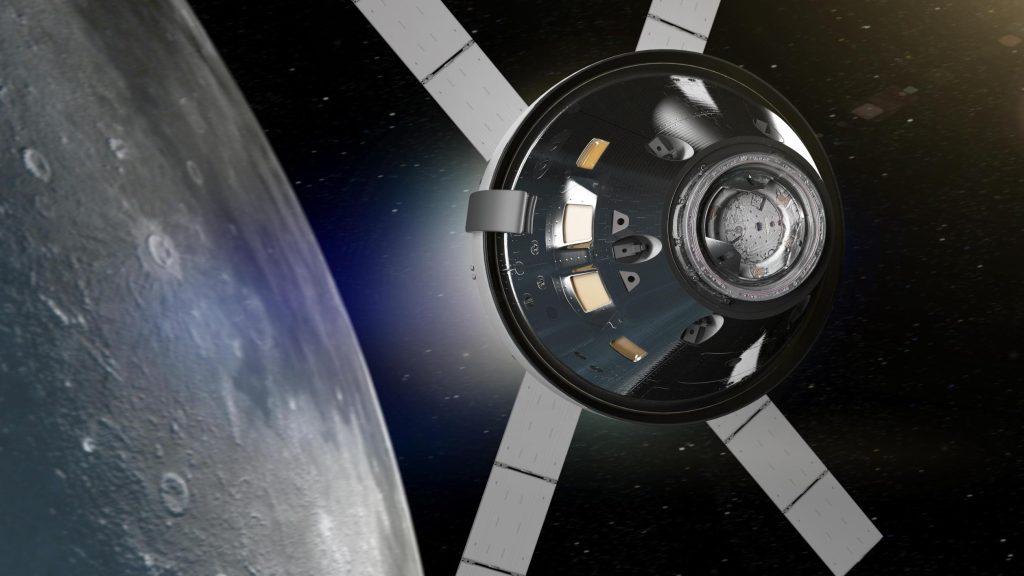
If all goes according to plan, Orion will then use its own European Service Module (ESM) to correct its trajectory and enter a Distant Retrograde Orbit around the Moon on November 25th, where it will remain tens of thousands of kilometers above the lunar surface. Orion will then leave lunar orbit as early as December 1st and reenter Earth’s atmosphere on December 11th before the capsule finally splashes down in the ocean.
Assuming Artemis I goes perfectly, Artemis II – SLS and Orion’s first launch with astronauts aboard – is scheduled no earlier than (NET) 2024. Artemis III, which will team up with a modified version of SpaceX’s Starship launch vehicle to attempt to land astronauts on the Moon for the first time since 1972, is expected to follow NET 2025. However, a reliable source with a prophetic track record estimates that Starship and SLS might not be ready to launch Artemis III until 2028.
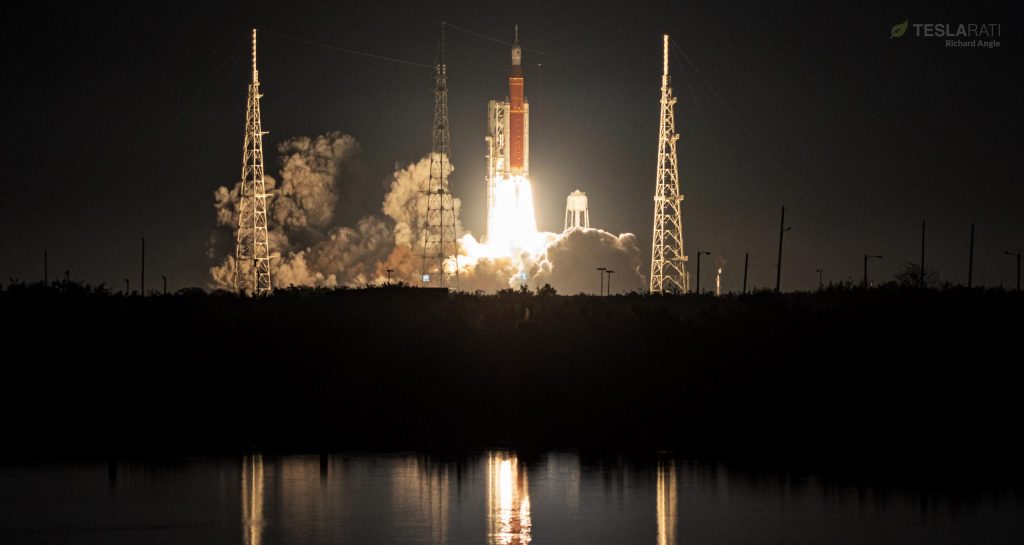
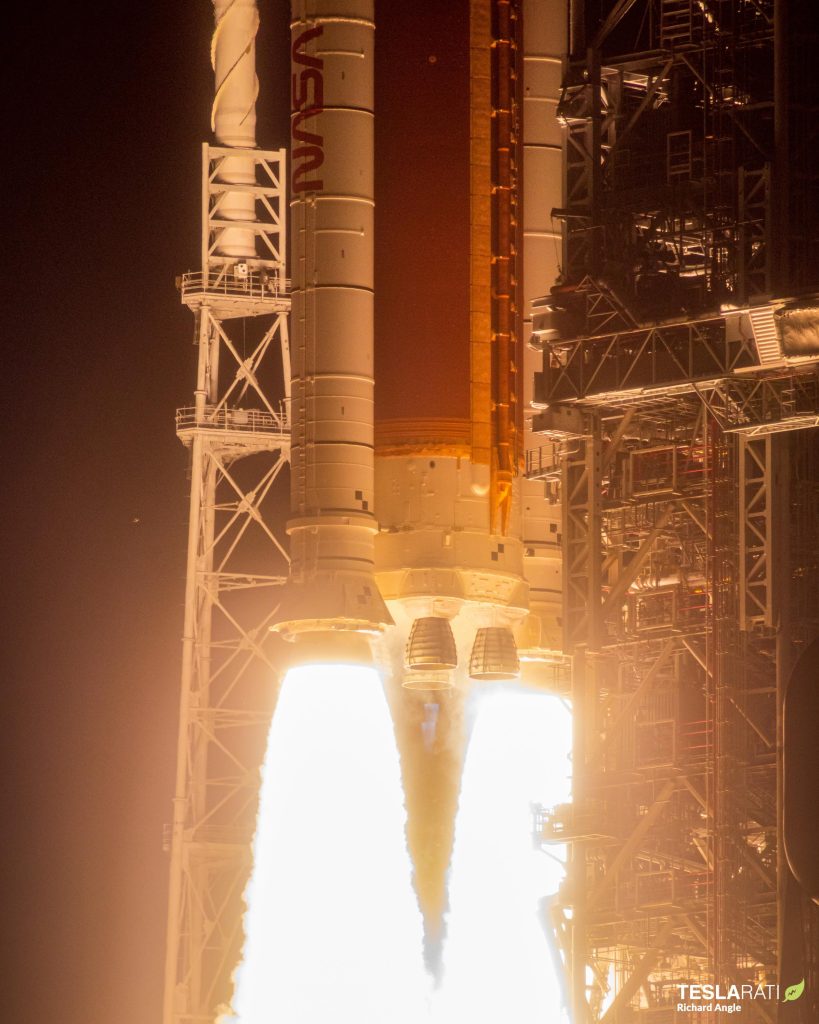
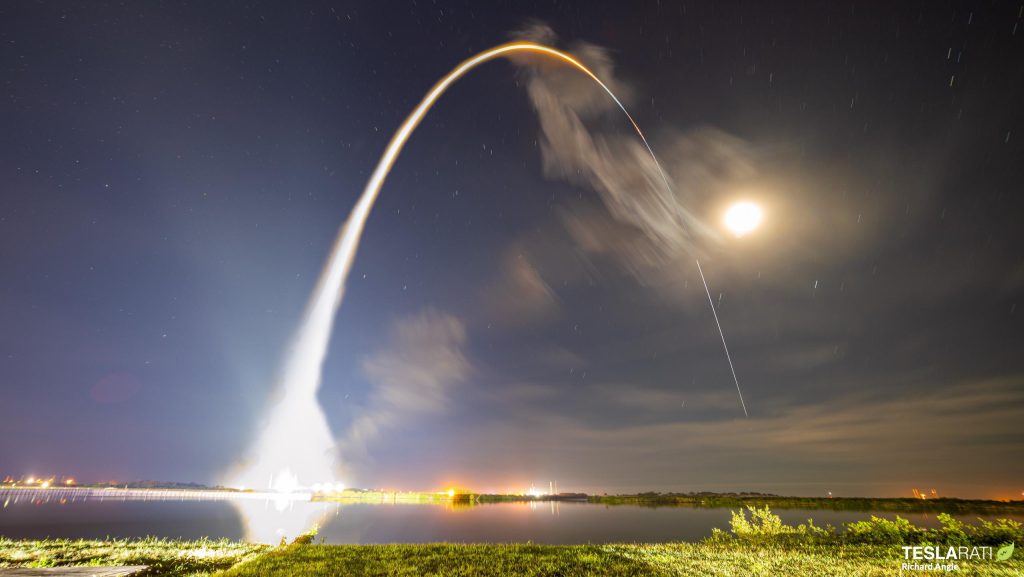

Elon Musk
Elon Musk and Tesla AI Director share insights after empty driver seat Robotaxi rides
The executives’ unoccupied tests hint at the rapid progress of Tesla’s unsupervised Robotaxi efforts.

Tesla CEO Elon Musk and AI Director Ashok Elluswamy celebrated Christmas Eve by sharing personal experiences with Robotaxi vehicles that had no safety monitor or occupant in the driver’s seat. Musk described the system’s “perfect driving” around Austin, while Elluswamy posted video from the back seat, calling it “an amazing experience.”
The executives’ unoccupied tests hint at the rapid progress of Tesla’s unsupervised Robotaxi efforts.
Elon and Ashok’s firsthand Robotaxi insights
Prior to Musk and the Tesla AI Director’s posts, sightings of unmanned Teslas navigating public roads were widely shared on social media. One such vehicle was spotted in Austin, Texas, which Elon Musk acknowleged by stating that “Testing is underway with no occupants in the car.”
Based on his Christmas Eve post, Musk seemed to have tested an unmanned Tesla himself. “A Tesla with no safety monitor in the car and me sitting in the passenger seat took me all around Austin on Sunday with perfect driving,” Musk wrote in his post.
Elluswamy responded with a 2-minute video showing himself in the rear of an unmanned Tesla. The video featured the vehicle’s empty front seats, as well as its smooth handling through real-world traffic. He captioned his video with the words, “It’s an amazing experience!”
Towards Unsupervised operations
During an xAI Hackathon earlier this month, Elon Musk mentioned that Tesla owed be removing Safety Monitors from its Robotaxis in Austin in just three weeks. “Unsupervised is pretty much solved at this point. So there will be Tesla Robotaxis operating in Austin with no one in them. Not even anyone in the passenger seat in about three weeks,” he said. Musk echoed similar estimates at the 2025 Annual Shareholder Meeting and the Q3 2025 earnings call.
Considering the insights that were posted Musk and Elluswamy, it does appear that Tesla is working hard towards operating its Robotaxis with no safety monitors. This is quite impressive considering that the service was launched just earlier this year.
Elon Musk
Starlink passes 9 million active customers just weeks after hitting 8 million
The milestone highlights the accelerating growth of Starlink, which has now been adding over 20,000 new users per day.

SpaceX’s Starlink satellite internet service has continued its rapid global expansion, surpassing 9 million active customers just weeks after crossing the 8 million mark.
The milestone highlights the accelerating growth of Starlink, which has now been adding over 20,000 new users per day.
9 million customers
In a post on X, SpaceX stated that Starlink now serves over 9 million active users across 155 countries, territories, and markets. The company reached 8 million customers in early November, meaning it added roughly 1 million subscribers in under seven weeks, or about 21,275 new users on average per day.
“Starlink is connecting more than 9M active customers with high-speed internet across 155 countries, territories, and many other markets,” Starlink wrote in a post on its official X account. SpaceX President Gwynne Shotwell also celebrated the milestone on X. “A huge thank you to all of our customers and congrats to the Starlink team for such an incredible product,” she wrote.
That growth rate reflects both rising demand for broadband in underserved regions and Starlink’s expanding satellite constellation, which now includes more than 9,000 low-Earth-orbit satellites designed to deliver high-speed, low-latency internet worldwide.
Starlink’s momentum
Starlink’s momentum has been building up. SpaceX reported 4.6 million Starlink customers in December 2024, followed by 7 million by August 2025, and 8 million customers in November. Independent data also suggests Starlink usage is rising sharply, with Cloudflare reporting that global web traffic from Starlink users more than doubled in 2025, as noted in an Insider report.
Starlink’s momentum is increasingly tied to SpaceX’s broader financial outlook. Elon Musk has said the satellite network is “by far” the company’s largest revenue driver, and reports suggest SpaceX may be positioning itself for an initial public offering as soon as next year, with valuations estimated as high as $1.5 trillion. Musk has also suggested in the past that Starlink could have its own IPO in the future.
News
NVIDIA Director of Robotics: Tesla FSD v14 is the first AI to pass the “Physical Turing Test”
After testing FSD v14, Fan stated that his experience with FSD felt magical at first, but it soon started to feel like a routine.

NVIDIA Director of Robotics Jim Fan has praised Tesla’s Full Self-Driving (Supervised) v14 as the first AI to pass what he described as a “Physical Turing Test.”
After testing FSD v14, Fan stated that his experience with FSD felt magical at first, but it soon started to feel like a routine. And just like smartphones today, removing it now would “actively hurt.”
Jim Fan’s hands-on FSD v14 impressions
Fan, a leading researcher in embodied AI who is currently solving Physical AI at NVIDIA and spearheading the company’s Project GR00T initiative, noted that he actually was late to the Tesla game. He was, however, one of the first to try out FSD v14.
“I was very late to own a Tesla but among the earliest to try out FSD v14. It’s perhaps the first time I experience an AI that passes the Physical Turing Test: after a long day at work, you press a button, lay back, and couldn’t tell if a neural net or a human drove you home,” Fan wrote in a post on X.
Fan added: “Despite knowing exactly how robot learning works, I still find it magical watching the steering wheel turn by itself. First it feels surreal, next it becomes routine. Then, like the smartphone, taking it away actively hurts. This is how humanity gets rewired and glued to god-like technologies.”
The Physical Turing Test
The original Turing Test was conceived by Alan Turing in 1950, and it was aimed at determining if a machine could exhibit behavior that is equivalent to or indistinguishable from a human. By focusing on text-based conversations, the original Turing Test set a high bar for natural language processing and machine learning.
This test has been passed by today’s large language models. However, the capability to converse in a humanlike manner is a completely different challenge from performing real-world problem-solving or physical interactions. Thus, Fan introduced the Physical Turing Test, which challenges AI systems to demonstrate intelligence through physical actions.
Based on Fan’s comments, Tesla has demonstrated these intelligent physical actions with FSD v14. Elon Musk agreed with the NVIDIA executive, stating in a post on X that with FSD v14, “you can sense the sentience maturing.” Musk also praised Tesla AI, calling it the best “real-world AI” today.








